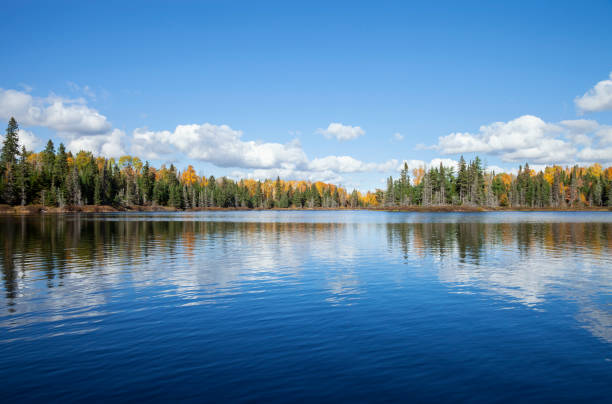



If you’re a bass fisherman, this is the time of year you wait for all winter. Hours and hours of prepping tackle, studying maps, watching fishing videos and getting the boat ready have all led up to the best season for big bites. You guessed it—the pre-spawn bass fishing season! It’s the bite that makes you realize why you bass fish. This is why you spend all those hours on the water putting in the work to find the best spots.
While some anglers out there, like myself, think this is prime time to catch the biggest fish of the season, there are others that struggle. At times, it can be tough to figure out that bite. But,covering water by power fishing is a great way to break down areas and find where bass like to sit. It’s also one of the best ways to put numbers and big bass in the boat. Let’s discuss what power fishing is, and how to target the biggest bass before the spawning season.
(Note: On The Water is reader-supported. When you buy through links on our site, we may earn an affiliate commission.)
Power fishing is defined by using certain techniques to break down different pieces of water as efficiently as possible to find fish faster. Often called “chuckin’ and windin’”, power fishing usually involves horizontal moving baits that can quickly cover all depths of the water column. For most anglers, whether fishing tournaments or beating the banks, this is one of the most effective ways to catch both quality and quantity.

This type of fishing often calls for what most bass fishermen love—big rods, heavy line, and reels with fast gear ratios. It’s what all bass fisherman daydream of on the water. There’s nothing better than getting slack-lined on 20 pound test with a heavy rod, then just wrenching on them like it’s your duty.
Like any style of fishing, there are baits that excel and ones that don’t. Finding the right baits, understanding how they should be fished and how bass react to them, are all part of the game. Here are a few favorite baits of mine and other anglers used for power fishing big largemouth during the pre-spawn season.

If you ask any angler what their favorite bait is, I guarantee 90% will say a chatterbait. A combination between a jig and a spinnerbait, the chatterbait is the best of both worlds. It provides the flash and vibration of a spinnerbait with the sleek and slender profile of a jig, making it one of the best combinations for success. During the pre-spawn, it drives bass insane. “There’s just something about the vibrations of a chatterbait that drive bass absolutely nuts,” says Caleb Konrad of Reel One Guide Service out of Syracuse, NY. Caleb is a long time friend of mine that is working up the ranks in tournament fishing here in the Northeast. He is also the one that I spend a lot of time with in the spring here in the finger lakes region of NY. Last season, we boated what was possibly the biggest bag we all have seen together—a 35.36-pound bag of northern strain largemouth, all of which were caught throwing a chatterbait. “The way chatterbaits move through the water, especially tungsten chatterbaits, is unlike any other lure on the market. It hunts along the bottom causing fish to chase it down and grab it” Konrad says.
When choosing the right chatterbait, you must first look at the structure, depth, and water conditions where you are fishing. In most circumstances, our go-to is the Z-Man JackHammer. It’s arguably the best all-around chatterbait for every condition. When the water is a little cleaner, it’s hard to beat the Z-Man Stealth Blade Chatterbait. With its smaller profile and glass blade, it creates less shine than its counterparts with a metal blade.
I feel that, lately, many anglers seem to forget the power of a spinnerbait, especially on springtime bass. A springtime staple for years, the spinnerbaits provides the look of a small school of baitfish while generating lots of resistance, and thus, heavy vibrations. It’s a bait that has been proven to catch thousands of bass across the country. It allows the angler to cover various depths, which makes it perfect for pre-spawn applications. You can burn a spinnerbait in dirt-shallow water or slow roll it to creep along pieces of deeper cover. Throughout the column, it can be used to cover lots of water, and it generates big strikes.
In the spring, I find myself throwing spinnerbaits up shallow along cattails, boat docks, duck blinds, and shallow wood—places that have a hard, defined edge. Generally, it consists of making short pitches around tight cover, like roll casting to get into the sneaky little spots and burning the bait out to trigger a reaction strike. My go-to spinnerbait is a Bassman Compact Spinnerbait, and for good reason. With its small profile and ability to swim through the water in a balanced and natural-looking manner, it’s great for fishing in close quarters where bass love to hide. While this may sound like spinnerbaits are made for largemouth, big smallmouth crush a spinnerbait—especially in the spring.
If there is one type of bait that will always hold a special place in my heart, it’s a shallow-diving crankbait. It can be fished around a variety of structures and creates vibrations with its rolling motion to entice any fish nearby. They have different lip designs to help deflect cover, like downed timber and rocks, and a variety of body styles to mimic the forage in your body of water. During the pre-spawn period, it’s hard to beat a balsa wood crankbait, like a Rapala DT series, to fish around hard cover. The buoyancy of these baits is superb when paused, and that slow rise draws reaction strikes from big bass that were following close behind.

On the opposite end of the spectrum are lipless crankbaits. With their hard rattles and rapid sink rate, they drive bass to bite in the pre-spawn, especially around standing vegetation. “When I fished at home I used a lipless crankbait some, but not until I started fishing Florida lakes with extremely-pressured bass did I see trap-style baits shine,” says Destin DeMarion. DeMarion is a former Bassmaster Elite Series pro and the owner of Big Fat Bass Guide Service on the shores of Lake Erie. “When I was guiding bass trips in Florida, it was a great way to get clients on fish with a chuck-and-wind retrieve, but it’s what’s inside that triggers bass to bite,” DeMarion continued. Trap-style baits come with a variety of different internal components. There are signature loud baits, such as the Bill Lewis Rat-L-Trap, that have many internal BBs to make the bait sing. Then there are single knockers, such as a Booyah One Knocker, which is most productive around rocks to imitate crayfish. Lastly, silent trap baits, like the Nomad Vertrex, give that subtle appeal to a pressured situation. Each style has its time and place depending on the type of structure and how pressured the bass actually are. “As far as retrieve speed, it always varies,” said DeMarion. When testing out these three styles of trap baits, it’s important to vary your retrieve and let the bass tell you what they want.
Pre-spawn bassin’ with power fishing techniques is a great way to cover water and more importantly, it’s a super fun way to fish. When power fishing, you’re constantly moving baits all day, so don’t get stuck in the same chuck-and-wind retrieve. Mix it up. Vary your retrieve and see what the fish are most responsive to. Replicating upon your bites is crucial to turn those quick strikes into fish in the boat.
Keep in mind that both smallmouth and largemouth may inhabit the same bodies of water and dwell in the same areas. And both species have one thing on their mind—fattening up before the spawn! Don’t be surprised if you get a stray smallmouth while throwing lures tailored to largemouth, and vice versa.
When you do get bit, make the same cast over and over again. During the pre-spawn, bass are NEVER alone. Once you find one fish, you’re apt to find the whole school. Stay on ’em and rip lips all day long. That’s what power fishing is all about!

Choose the Right Jerkbait for Spring Bass Fishing



